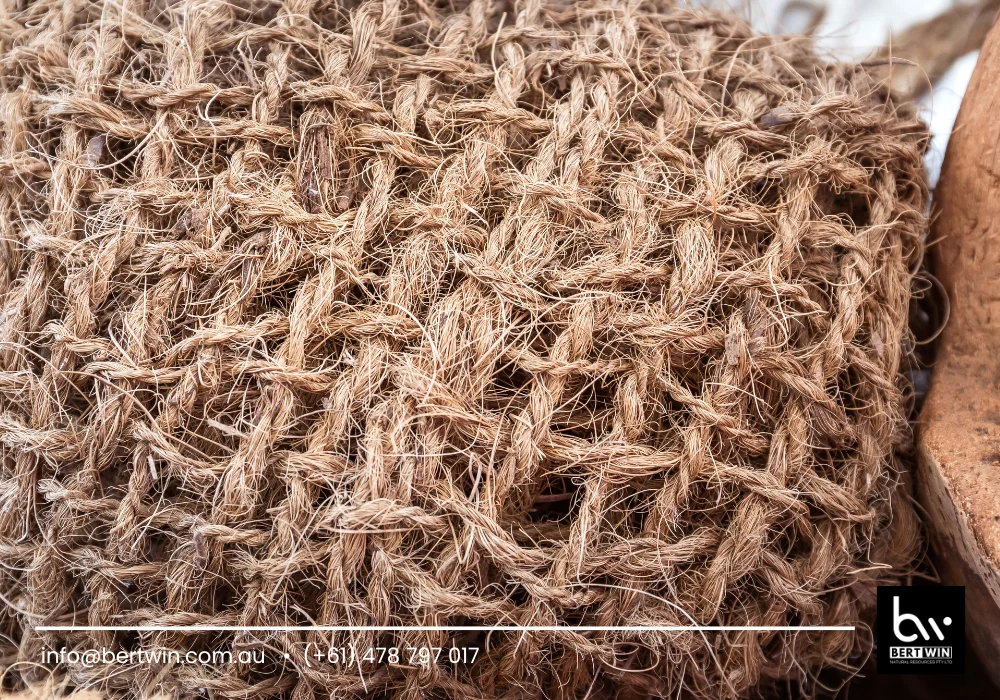Coco mesh benefits have become increasingly recognized in environmental management, landscaping, and construction sectors due to its effectiveness in soil stabilization, erosion control, and ecological restoration. Made from the natural fibers of coconut husks, coco mesh is a biodegradable and sustainable solution that supports both short-term and long-term environmental goals. In this article, we will explore the key coco mesh benefits that make it a smart choice for a wide variety of green infrastructure projects.

The use of coco mesh aligns with global efforts toward sustainable development and ecological balance, offering an alternative to synthetic materials that often contribute to long-term environmental degradation.
What is Coco Mesh?
Coco mesh, also referred to as coir mesh or coconut fiber netting, is a woven mat created from the coarse fibers found between the hard internal shell and the outer coat of a coconut. These fibers are processed and twisted into strong ropes, which are then woven into mesh sheets of varying thickness and density, depending on the intended use.
Coco mesh is fully biodegradable, with a decomposition period ranging from two to five years. During that time, it plays a critical role in soil support and plant root development while gradually returning nutrients to the earth as it breaks down.
How Coco Mesh is Made
The process starts by extracting coconut husk fibers, which are washed, dried, and spun into twine. This twine is woven into mesh using manual or semi-mechanized looms, resulting in a durable, flexible, and breathable fabric. The simplicity of this process and the use of agricultural waste make coco mesh a low-impact, high-value product.
Top Coco Mesh Benefits
The diverse coco mesh benefits can be seen across applications in agriculture, construction, reforestation, and landscaping. Here are some of the most notable advantages:
1. Natural Erosion Control
One of the primary coco mesh benefits is its exceptional ability to prevent soil erosion. Whether installed on a sloped surface, riverbank, or construction site, coco mesh holds soil in place against the forces of wind and water. This makes it an ideal solution in regions with heavy rainfall or vulnerable terrain.
2. Supports Vegetation Growth
Coco mesh provides a stable surface for seeds and young plants to grow. Its breathable structure allows air, water, and nutrients to pass through, promoting healthy root development. Once plants are established, their roots work in tandem with the mesh to reinforce soil structure.
3. Biodegradable and Eco-Friendly
Unlike plastic or synthetic geotextiles, coco mesh decomposes naturally without harming the environment. It enriches the soil as it breaks down and leaves no toxic residues behind. This makes it especially valuable for eco-sensitive areas like wetlands, forest edges, and organic farms.
4. Strength and Durability
Despite being made from natural materials, coco mesh offers impressive strength and durability. It can withstand heavy rain, foot traffic, and even moderate machinery, making it suitable for demanding applications such as highways, parks, and industrial landscapes.
5. Cost-Effective and Low Maintenance
Another key advantage among coco mesh benefits is its low maintenance requirement. Once installed, it requires minimal intervention. Its longevity reduces the need for frequent replacements, and it often outperforms more expensive synthetic options in terms of life-cycle cost.
6. Versatile Applications
From restoring riverbanks to reinforcing hillsides and beautifying gardens, coco mesh has a wide range of uses. It is also commonly used in reforestation efforts, roadside greening, and mine reclamation projects where natural rehabilitation is needed.
Installation and Best Practices

To take full advantage of coco mesh benefits, proper installation is essential. The area should first be cleared of debris and leveled as needed. The mesh is then laid out over the soil and anchored using wooden stakes, bamboo pegs, or biodegradable fasteners.
In many cases, seeds or plant plugs are added beneath or on top of the mesh. Over time, as plants grow and the mesh degrades, the vegetation takes over the role of soil stabilization. Regular monitoring in the early weeks ensures successful plant establishment.
Why Choose Coco Mesh Over Synthetic Alternatives?
Choosing coco mesh reflects a commitment to sustainability. It reduces landfill waste, supports local coconut-based industries, and helps protect ecosystems from further degradation. Additionally, it avoids many of the downsides of plastic mesh, such as pollution, poor biodegradability, and unnatural appearance.
The use of coco mesh is also in line with modern green infrastructure trends that favor regenerative and nature-based solutions.
Conclusion
The many coco mesh benefits—including erosion prevention, plant support, environmental friendliness, and cost efficiency—make it a top choice for professionals and homeowners alike. Whether used in landscaping, environmental conservation, or construction, coco mesh delivers outstanding performance with a minimal environmental footprint.
For further information, you may contact WhatsApp at (+61) 478797017 or via email at info@bertwin.com.au.
